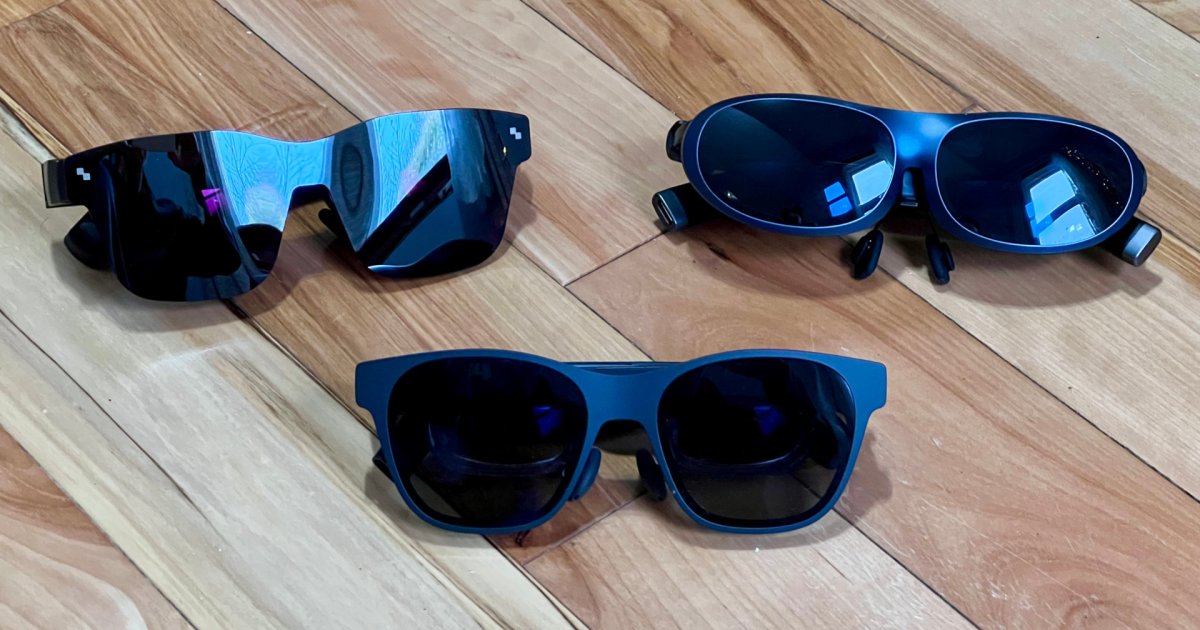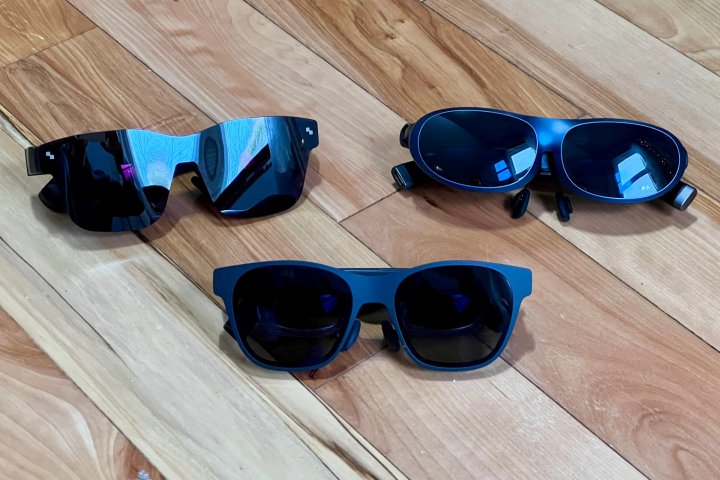
Conceptually, smart glasses with displays are great. You get a giant screen that hovers in the center of your view and personal stereo sound in a pair of glasses you can fold and put in your pocket. In practice, there have been some issues preventing this technology from going mainstream. Most notably, comfort has been a problem.
I tried next-gen smart glasses from industry leaders Xreal, Rokid, and TCL to find out if these new wearables are more suitable for your discerning eyes, attentive ears, and sensitive noses. And what I found was pleasantly surprising.
How wearable are smart glasses?
The most advanced hardware in the world might collect dust on a shelf if it’s awkward or painful to use. That’s an issue even for the best VR headsets, and the nascent AR and smart glasses market faces an even greater challenge.
We want eyewear to look normal, be comfortable for hours, and display a giant screen with good sound. The latest smart glasses get surprisingly close to that ideal.
Early smart glasses fell short in a few areas. Thick and heavy designs with limited adjustability resulted in a wearable that’s hard to wear. The latest models weigh less, but the question remains as to whether they’re comfortable enough.
A 1-ounce pair of sunglasses is fine for most people, and prescription lenses that weigh 2 to 3 ounces might be a necessity, even if they leave indentations on your nose and make your ears sore.
Since smart glasses are optional, people are less willing to accept discomfort. Every gram counts when a device rests on your face. Audio-only glasses and glasses with cameras, but no displays, like the Ray-Ban Meta Smart Glasses, are lightweight.
And it’s not only about weight; improved nose pads and earpieces can soften and distribute the load, so smart glasses feel lighter than they are. Manufacturers listened, and next-gen glasses feel much better, making them more inviting for browsing and binge-watching.
Xreal Air 2
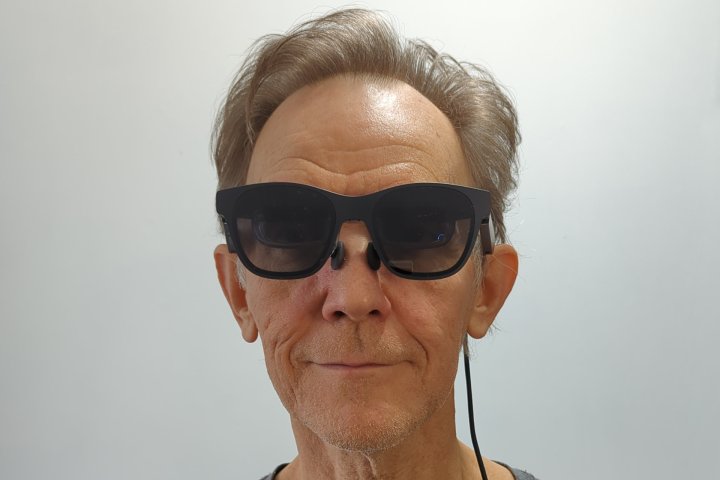
There’s a reason Xreal is the leading manufacturer of smart glasses with displays. The Xreal Air glasses were the best solution when launched in 2022, and the Air 2 upgrades every aspect of that technology and design.
The displays are brighter, and 500 nits of intensity is good enough for a bright room or outside on a cloudy day. The audio is good, with minimal leakage for an open-ear design.
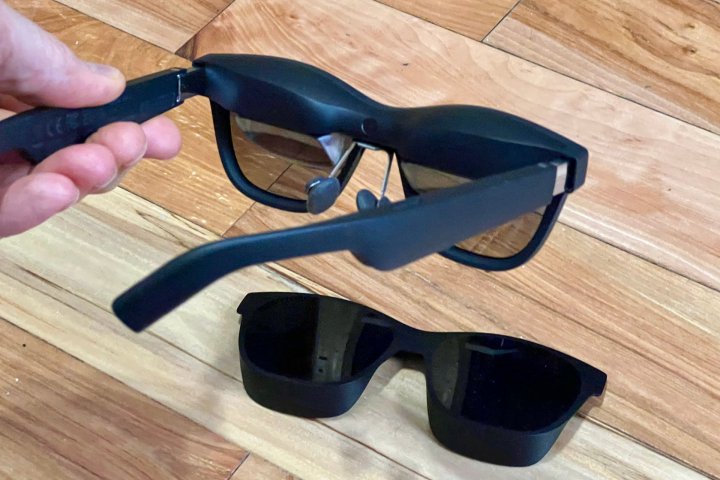
I feel like I could wear the Xreal Air 2 endlessly. My wife, who is more sensitive to smart glasses comfort, found them to be the most comfortable she’d ever tried.
If I add the included shades, the weight increases to 79 grams, and the extra third of an ounce is noticeable after an hour or two. Thankfully, the Xreal Air 2 smart glasses are bright enough that I rarely use the shades.
TCL RayNeo Air 2
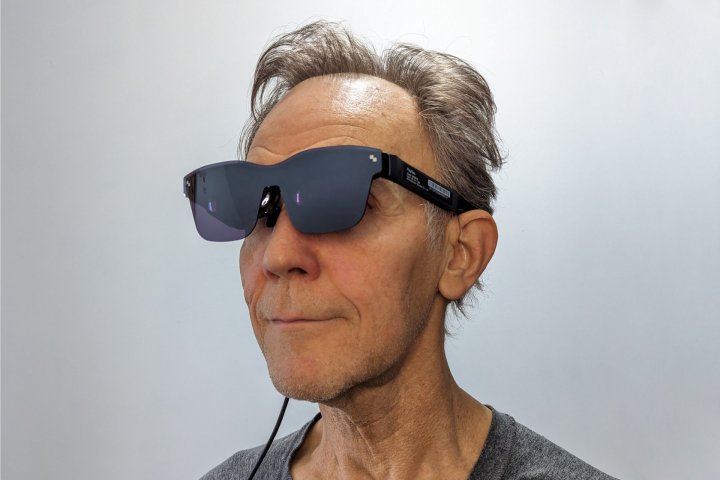
TCL took a different approach to its latest smart glasses, building permanent shades into the design. At 76 grams, the RayNeo Air 2 are the lightest smart glasses that are suitable for outdoor use.
The built-in tint is great for watching movies, but it makes it harder to see your surroundings in a dim room. It’s like wearing sunglasses, which could be a drawback when using them at night.

The RayNeo Air 2 glasses have soft, adjustable nose pads and a vertical hinge adjustment similar to Xreal’s design. I found these smart glasses to be as comfortable as the Xreal Air 2, but the rigid earpieces didn’t suit my wife.
The display brightness of 600 nits makes the RayNeo Air 2 one of the brightest smart glasses available. The sound quality is good, though I didn’t notice some buzzing at maximum volume.
Rokid Max

Rokid has been making smart glasses for several years, serving industrial needs. The Rokid Max glasses draw on that expertise, creating a refined solution that’s one of my favorites.
The 75-gram weight and comfortable nose pads make these easy on the nose. Although the earpieces are rigid, the shape seems to work for my wife’s smaller ears, as well as mine.
The included shades are opaque, providing full immersion, but bring the weight to 2.9 ounces. The bright 600-nit display makes the blackout covers unnecessary in most cases.
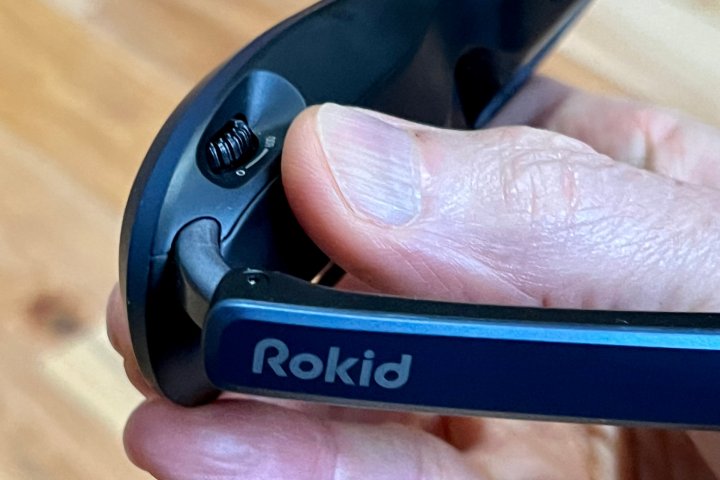
The Rokid Max smart glasses have a unique feature that helps keep the virtual screen super sharp — diopter adjustment of up to -6.00D on each eye. I have mild myopia, so this solution relieves all eye strain for me without the need for prescription inserts.
The sound quality is good, with very little leakage of my audio to people around me.
Compatibility

Some smart glasses include their own processors and can run apps natively, but the smart glasses I’ve been describing require video streaming from a phone, laptop, computer, or gaming console. You need a device that supports USB-C Alt mode or an HDMI-to-USB-C cable or other adapter to use any of these smart glasses. If your phone isn’t compatible, you’ll need an adapter, and each manufacturer has a different solution to this problem.
Xreal offers Nebula software that expands the virtual screen beyond the boundaries of the physical screen. When you turn your head, you can see more. On a Mac or Windows PC, you can add three extra monitors. That can make a big difference since it means you might not need an ultrawide monitor or multi-monitor setup if you use Xreal smart glasses.
On Android, the Nebula app is different, presenting an ultrawide screen that serves as a launcher and a multi-window browser. My phone serves as a pointer, projecting a beam to select windows. It’s not as useful as Samsung’s Dex, but it’s an interesting way to see more within the limited screen size of smart glasses.
Rokid Max has a similar Android app, and TCL has an Android app in beta testing for its RayNeo Air 2 smart glasses. Neither has a computer solution yet, but there are third-party solutions like GingerXR.
Xreal Beam

Xreal’s Beam is compatible with the original Xreal Air and the new Air 2 smart glasses. It enables Wi-Fi connectivity so I can cast my screen wirelessly from my iPhone, Android, Windows, or Mac. It also adds spatial awareness with three degrees of freedom, similar to the Nebula app.
The Beam accessory fits in a pocket or rests on a desk. The glasses still need a cable to get video and power from the Beam. The battery supplies about four hours of runtime.
Rokid Station
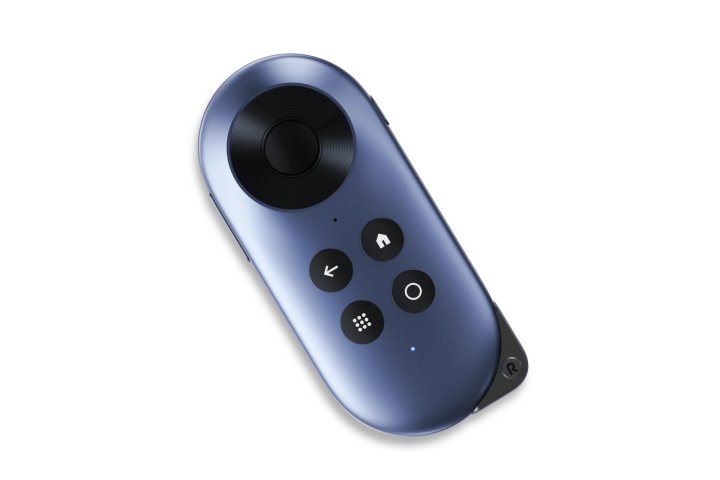
Rokid Station is a pocket Android TV that connects via a cable to the Rokid Max for watching videos and playing games without any other device. I can mirror my Android phone or cast to Rokid Station from YouTube and Chrome from an iPhone, a computer, or a laptop.
You get five hours of battery life with the Rokid Station. If you buy a Rokid Station, keep track of the included USB-C to Micro HDMI cable, because it’s hard to find a third-party replacement.
TCL MiraScreen
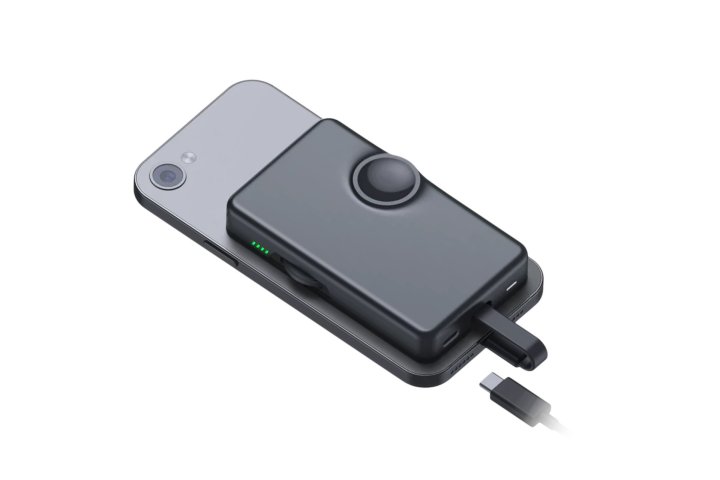
The TCL MiraScreen provides mirroring for devices that don’t support USB-C Alt mode. The device supplies enough power for 3.5 hours of use.
The back attaches magnetically to an iPhone that supports MagSafe and some other devices that have a magnetic back. Two short cables are included to make it easy to connect to a USB-C or a Lightning port.
Which next-gen glasses should you buy?
These next-generation smart glasses are much more comfortable, but have some significant differences. You need to consider compatibility. Skipping the adapter is best if that’s an option. If you own a device that won’t directly connect, review the compatibility section above to narrow in on the best choice.
If you’re near-sighted, the Rokid Max’s built-in diopter adjustment makes these smart glasses an excellent choice. You won’t need to order expensive prescription lenses to enjoy watching videos, playing games, mirroring your phone, or extending your laptop’s desktop to a virtual monitor.
Xreal Air 2 is an all-around great solution and the most comfortable of all. Xreal’s Nebula app for Mac and Windows makes these smart glasses ideal for work use, adding up to three virtual displays to your laptop or computer.
If you know you’ll be using your smart glasses outdoors often, the built-in shades of TCL’s RayNeo Air 2 can never be lost and make video streaming more immersive.
Whichever solution you choose, it’s nice to know you’ll get more use out of this new generation of smart glasses that don’t make watching videos on a virtual screen a pain in the nose.
Editors’ Recommendations

